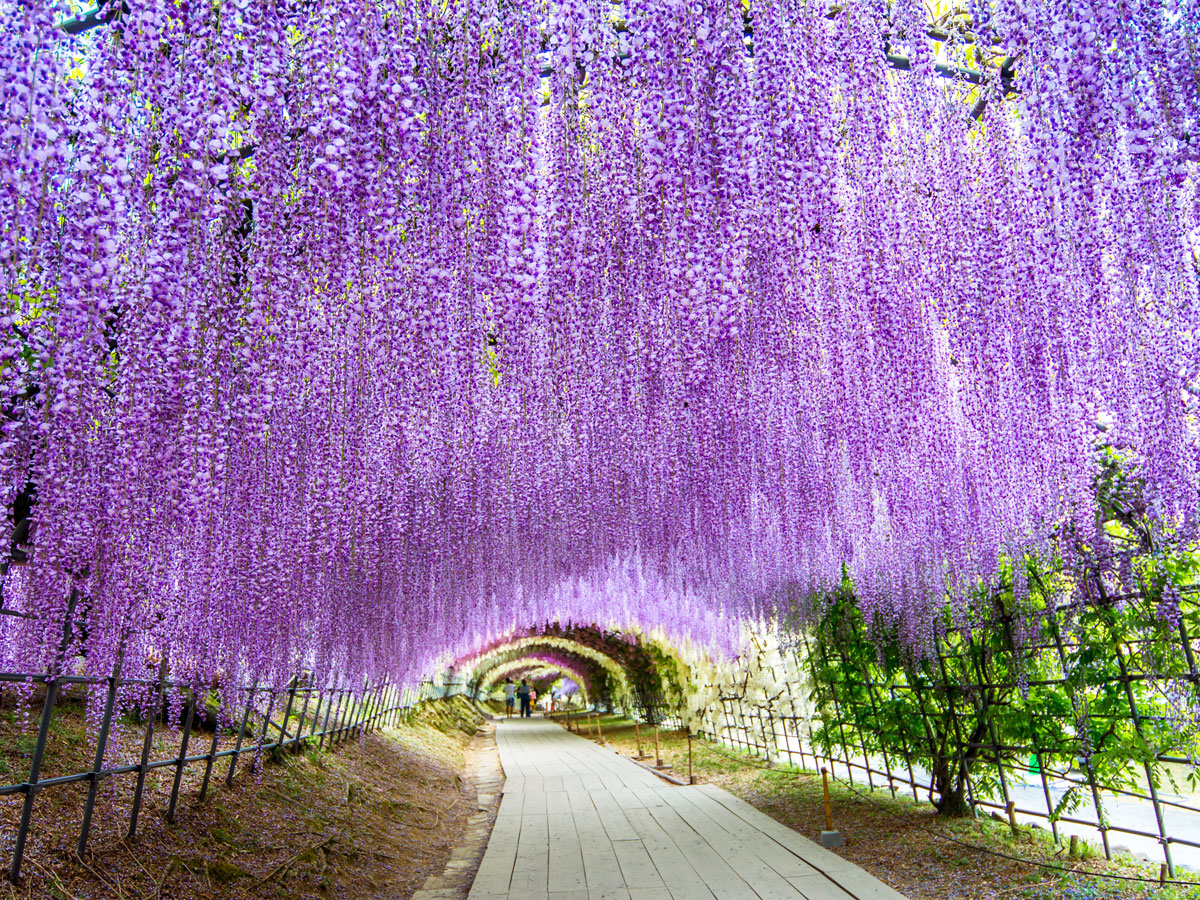Few things ignite the imagination like a fairy tale — the scenes of grand castles, charming villages, and enchanting forests can often sweep us away to magical land. But if you know where to look, you can experience these storybook wonders in real life. From the Fairy Pools of Scotland to a Slovenian castle built into the side of a cave, these 10 places look like they belong in the pages of a fairy tale.
Predjama Castle – Slovenia
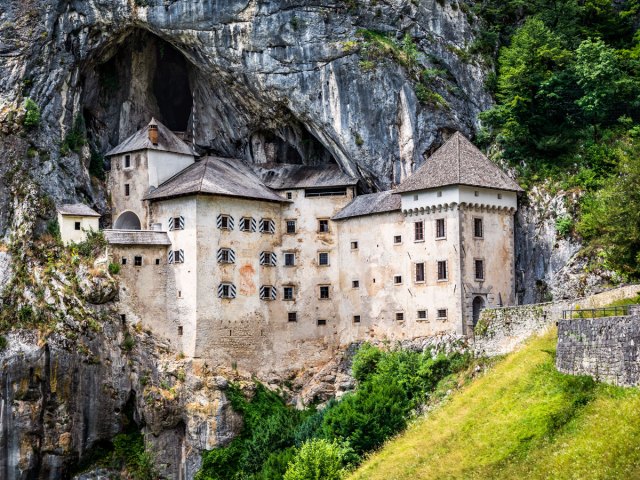
It’s hard to tell where the Predjama Castle ends and its surrounding cave begins. Originally constructed in the 12th century and rebuilt in the 15th century, the Renaissance-style fortress was built directly into the face of a dramatic, 400-foot-tall, Slovenian cliffside. Surrounded by beautiful greenery, the location was chosen to make access difficult — and escape easy. Hidden behind the whitewashed stone façade, secret passageways lead into underground caves (including the nearby famous Postojna Cave) and out onto the top of the cliff.
The castle’s fantastical elements only lend to its mysterious past. One of the castle’s most enduring legends is that of Erazem Lueger, a Robin Hood-esque baron who once hid out in the castle but continued to steal from the rich by sneaking out through a secret passage behind an unassuming stone wall. He was eventually caught, but Lueger is said to still haunt the castle to this day.
Fairy Chimneys of Cappadocia – Turkey

The unusual rock formations of Cappadocia’s famous “fairy chimneys” might look like something out of a storybook, but they’re the result of a natural phenomenon. The spires that stretch high from the grounds of Turkey’s surreal Göreme National Park formed from volcanic eruptions millions of years ago. The ash later formed into a rock sediment called tuff; the soft stone was shaped by years of erosion into the whimsical hoodoos, rock formations, and valleys.
While the fairy chimneys of Cappadocia are a geological wonder, the resourceful way humans have used the formations throughout history is perhaps even more extraordinary. As Christians fled persecution during the Roman Empire, they congregated in Cappadocia — excavating the soft tuff of the fairy chimneys to create safe harbors. The caves were used as modest homes, expanding the network into underground cities that sheltered thousands in need over centuries.
Today, the refuge is a UNESCO World Heritage Site and a popular tourist destination that offers hot-air balloon rides and unique accommodations within the caves themselves where guests can enjoy the comforts of a boutique hotel room (complete with cozy fireplaces and unparalleled views) while surrounded by millions of years of history.
Tunnel of Love – Ukraine

It began as a Cold War decoy and is still an active industrial railway today, but the Tunnel of Love in Klevan, Ukraine, is also one of the most beautiful sites in the country. The nearly two-mile stretch of tracks is covered with a lush arch of vegetation. The romantic feature was sculpted by the trains transporting plywood panels from a nearby factory that travel the route up to three times a day.
Couples are especially fond of the tree-covered trail thanks to the local legend, which posits that they will be granted a wish after walking its length (as long as their intentions are pure, that is). History buffs are also fond of the spot where the railway forks and leads to a hidden military base in the forest. The bending trees that now define the tracks were reportedly planted during the Cold War era in order to cover up the transport of military hardware to and from the camouflaged base.
Mont Saint-Michel – France
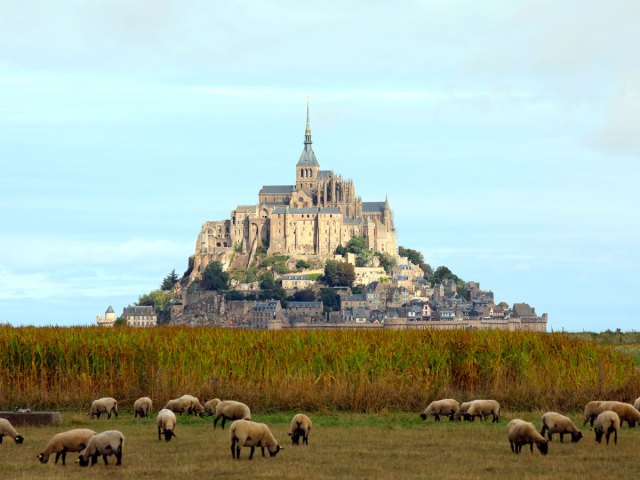
The stately Mont Saint-Michel, nestled just off the coast of Normandy in northwest France, is a tidal island village anchored by a medieval abbey that’s one of the most popular tourist destinations in France. Mont Saint-Michel is only completely surrounded by water once every month or two; otherwise, the tides recede, leaving the island surrounded by sand. The island’s stark surroundings only add to its utopian appearance, giving the otherworldly illusion that it could be floating in the clouds.
Mont Saint-Michel’s Gothic-style abbey and spires are so whimsical that the location famously served as a real-life inspiration for the Lord of the Rings trilogy, as well as Rapunzel’s parents’ castle in the Disney movie Tangled. The island is home to only about 40 full-time residents, but is visited by over 3 million people each year.
Neuschwanstein Castle – Germany
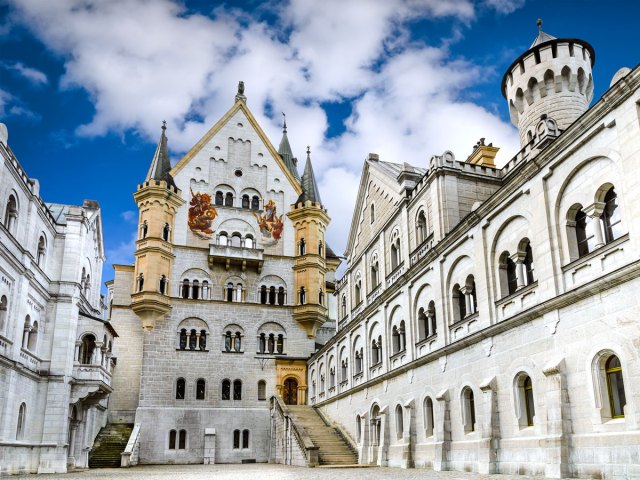
This might be as close as it gets to a real-life fairy tale location. Perched high on a steep, rocky hill above the village of Hohenschwangau in southwest Bavaria, Germany, Neuschwanstein Castle was built in the 19th century by King Ludwig II of Bavaria, who was also known as the “Fairy-tale King.” The stunning structure has since become one of the most recognizable castles in the world, not only for its own impressive presence, but for the magical place it inspired.
Before he built Disneyland, Walt Disney took a trip to Europe that included a stop at the magnificent fortress. He adapted the castle’s turrets and towers for the centerpiece of his theme park (the very first Disneyland) in Anaheim, California, using Neuschwanstein as the model for Sleeping Beauty’s Castle. Just as the Disney princess’ castle is one of the most recognizable landmarks in the U.S., Neuschwanstein Castle is one of the most beloved and visited tourist destinations in Europe, welcoming more than 6,000 visitors on a busy day.
Castello di Miramare – Italy
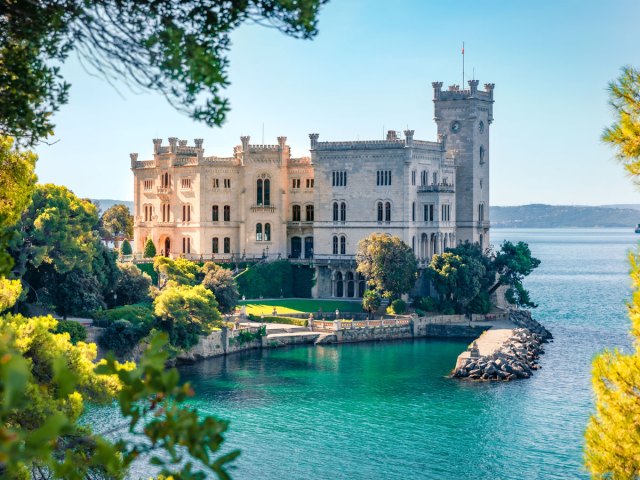
Castello di Miramare, with its brilliant, whitewashed, Gothic-style exterior and dazzling seaside surroundings, looks more like the setting for a soap opera than it does a 19th-century Italian castle. Located just outside of the beautiful coastal city of Trieste, Miramare was originally built for Austrian Archduke Ferdinand Maximilian.
The elegant edifice looks straight out of a storybook. Situated on a cliff above the famously blue Adriatic Sea on a lush, 54-acre park, the castle was designed by the archduke himself and was custom landscaped to feature tropical trees and plants. While it’s hard to pick just one standout feature of Miramare and its surroundings, one highlight is undoubtedly the gorgeous terraces that encircle the castle. With unparalleled views of the sprawling park and the Adriatic, the scenery is definitely fit for a princess.
Rakotzbrücke – Germany
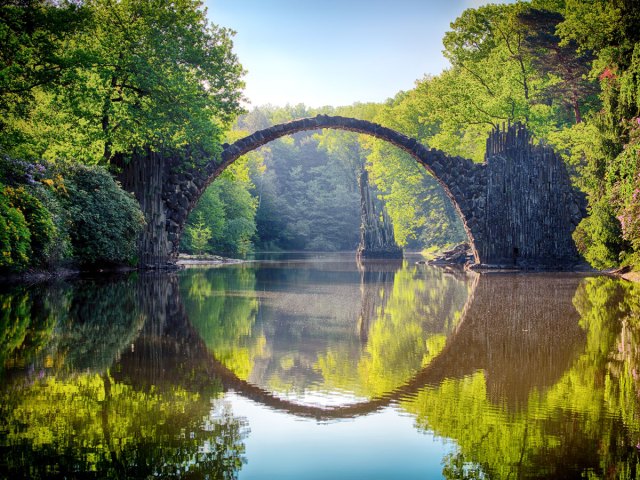
It’s hard to believe that a place referred to as the “Devil’s Bridge” could be so beautiful. But Rakotzbrücke, located in the Azalea and Rhododendron Park Kromlau in Gablenz, Germany, is one of the most breathtaking scenes in all of Europe. The medieval-style, 19th-century stone bridge, featuring thin rock spires at both ends, arches up in a near-perfect semicircle. On a clear day with calm wind, visitors will witness the illusion of a full circle in the Rakotzsee lake’s reflective water below.
The Rakotzbrücke isn’t the only Devil’s Bridge in Europe. The name was given to several bridges with local legends behind them. In the case of Rakotzbrücke, it’s said that the bridge’s designer consulted with the devil when coming up with its gravity-defying shape.
Fairy Pools – Scotland
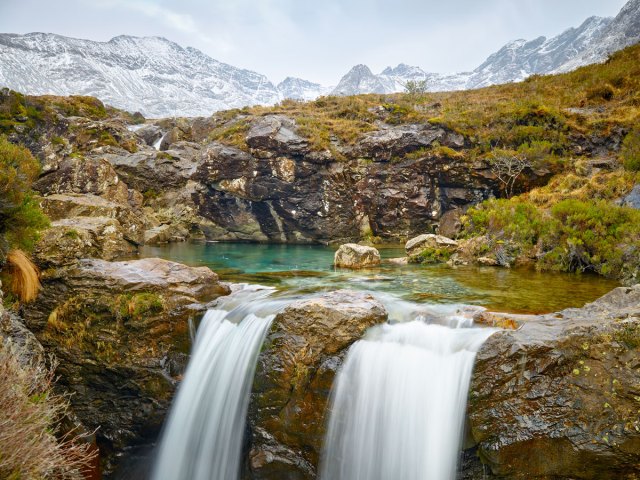
Isle of Skye is a breathtaking place in the Inner Hebrides, an archipelago off the west coast of Scotland. From majestic, medieval castles to picturesque villages and magnificent seaside views, the landscape offers no shortage of sightseeing adventures. But one of the most memorable is the magical Fairy Pools, a cluster of small waterfalls, rugged rocks, and pools of crystal-clear, teal water that inspired some of the best fantasy fiction ever written.
Located on the River Brittle at the foot of the Black Cuillin mountain range, the pools are fed spring water from a series of waterfalls in the adjacent mountains. Though they may look inviting, the springs are bone-chillingly cold — tempting only the most adventurous swimmers to take a dip. Given Scotland’s penchant for folklore and legends, it’s somewhat surprising that the pools themselves don’t have any major myth attached to them (other than being named after fairies, of course), but that doesn’t take away from the sense of wonder found on Skye.
Kawachi Fuji Gardens – Japan

The Japanese cherry blossom might be the national flower of Japan, but the elegant, vining wisteria plant is the star of one of the dreamiest places in the country. Located in the Kawachi Fuji Gardens in Kitakyushu (about a six-hour drive from Tokyo), the wisteria tunnel features 300 feet of pretty, pastel-colored blossoms The plant’s vines easily adapt to their surroundings, wrapping their stems around anything they come into contact with. The result is about 150 wisteria plants, spanning 20 different species of the flower, gracefully climbing and dangling from the tunnel’s overhead in a floral fever dream of white, blues, purples, and pinks.
The walkway isn’t the only place to take in the flowers’ romantic splendor. An overlook provides a perfect view of the tunnel’s expansive blossoming roof. The wisterias are at peak bloom in spring, and while it’s typically tough to secure a ticket among the thousands of other tourists, it doesn’t mean you can’t daydream about having the tunnel to yourself for the perfect bridal shoot, romantic walk, or solitary stroll to find peace in nature.
Glowworm Caves – New Zealand
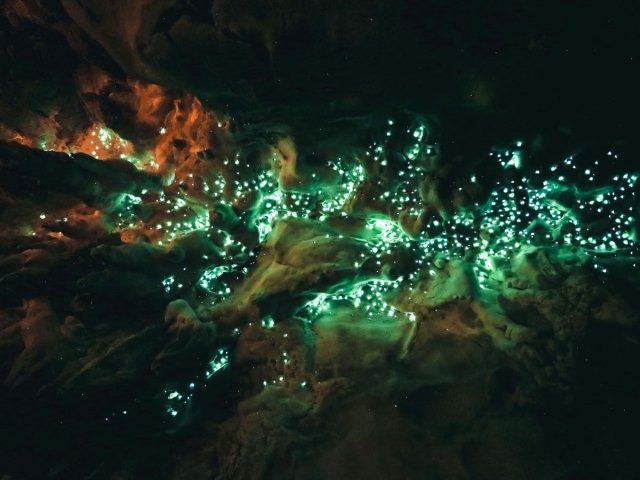
The wondrous glowworm (officially known as arachnocampa luminosa) emits an unmistakable iridescent, blue-green light. Bioluminescent marine life lives around the world, such as in the famous reefs of the Maldives’ shimmering Sea of Stars, but glowworms are unique to New Zealand, and create a magical subterranean phenomenon in the country’s many caves.
As thousands of glowworms dangle from the caves’ limestone ceilings, the gentle glow resembles a serene, starry wonderland — creating an illusion that feels otherworldly. The Waitomo Caves, located about 125 miles from Auckland in the village of Waitomo, offer one of the most magical viewing experiences in the country. Glowworms can also be found in other damp and overgrown areas like lakes and rivers, although these dwellings pale in comparison to the ambience of the enclosed caves.
More from our network
Daily Passport is part of Optimism, which publishes content that uplifts, informs, and inspires.






